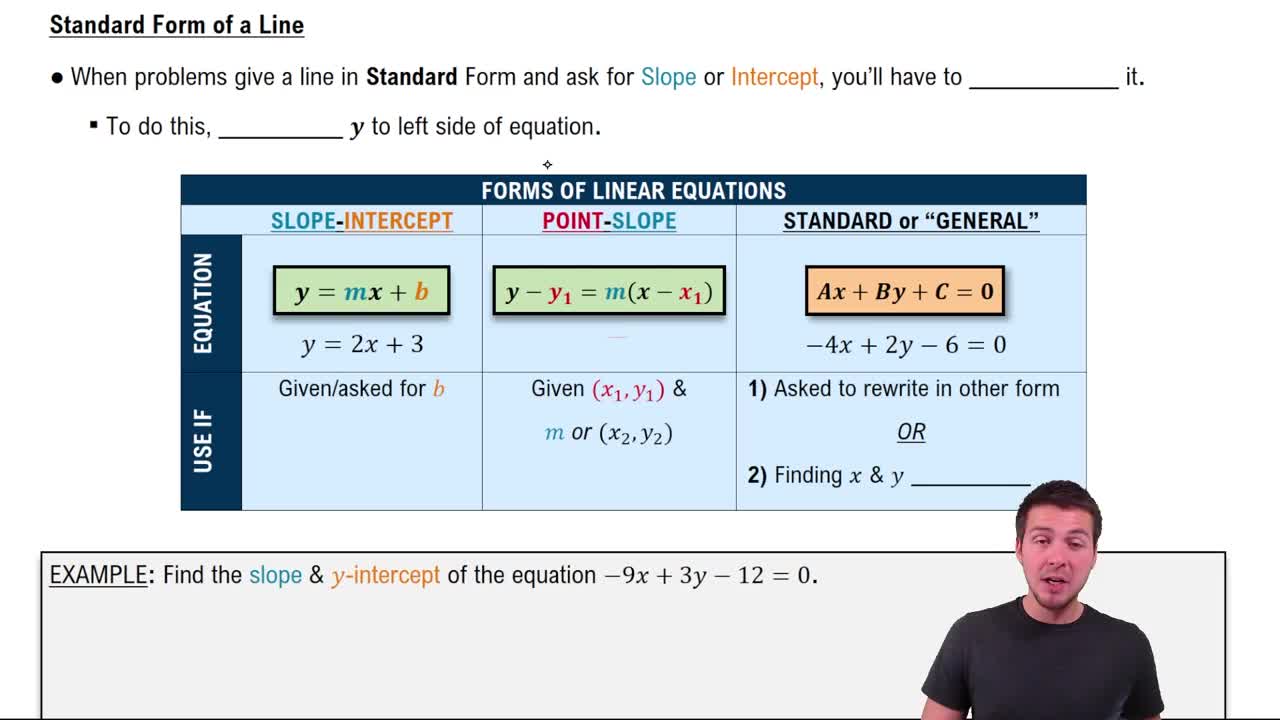Here are the essential concepts you must grasp in order to answer the question correctly.
Intercepts
Intercepts are points where a line crosses the axes on a graph. The x-intercept is the point where the line intersects the x-axis, represented as (a, 0), while the y-intercept is where it intersects the y-axis, represented as (0, b). In this case, the x-intercept is (3, 0) and the y-intercept is (0, -2), which are crucial for determining the equation of the line.
Recommended video:
Slope-Intercept Form
The slope-intercept form of a linear equation is given by the formula y = mx + b, where m represents the slope of the line and b represents the y-intercept. This form is particularly useful for quickly identifying the slope and y-intercept, allowing for easy graphing of the line. For the given intercepts, the slope can be calculated using the coordinates of the intercepts.
Recommended video:
Standard Form of a Linear Equation
The standard form of a linear equation is expressed as Ax + By = C, where A, B, and C are integers, and A should be non-negative. This form is useful for solving systems of equations and for understanding the relationship between the coefficients and the graph of the line. Converting from slope-intercept form to standard form may be necessary depending on the requirements of the problem.
Recommended video:
Standard Form of Line Equations



